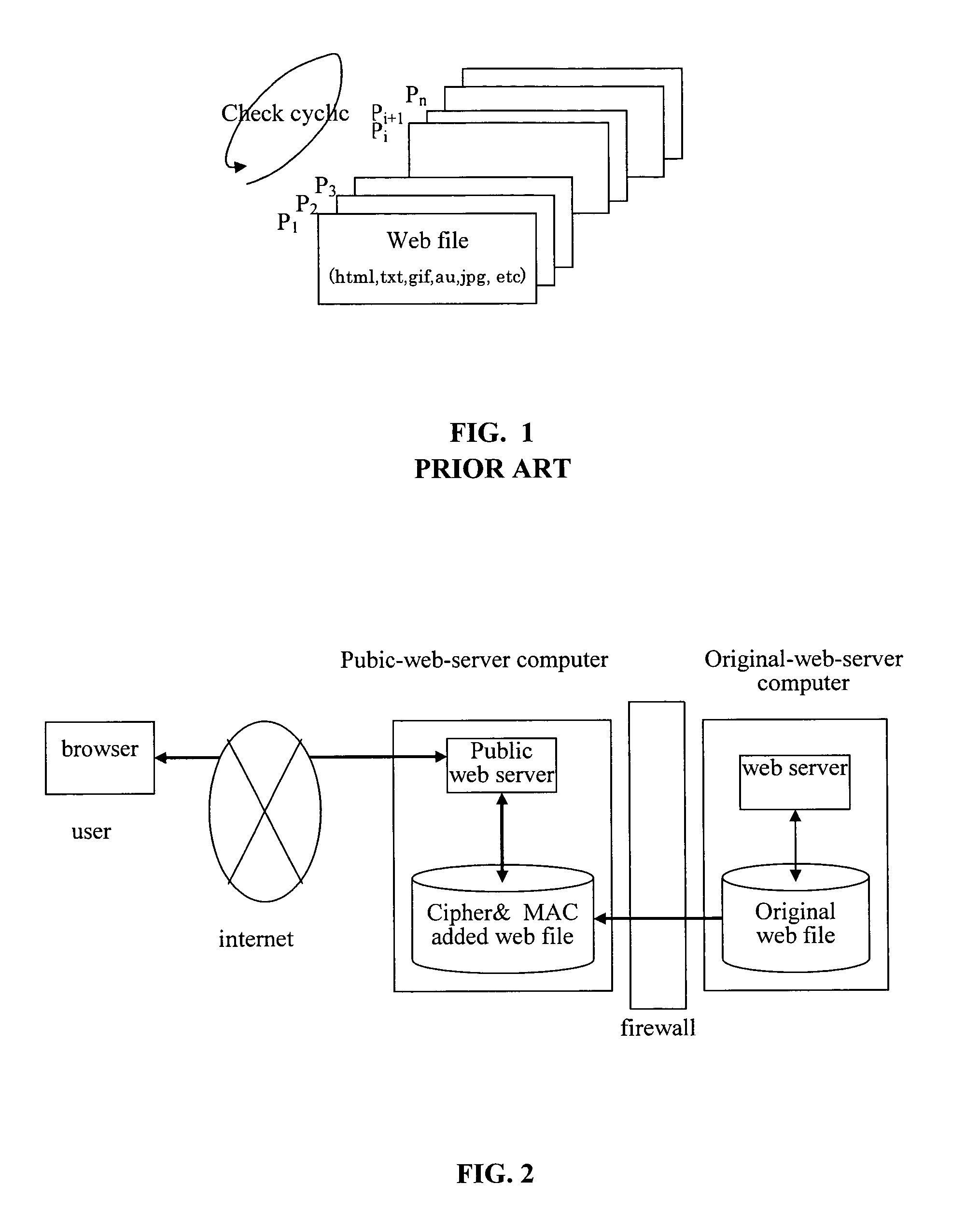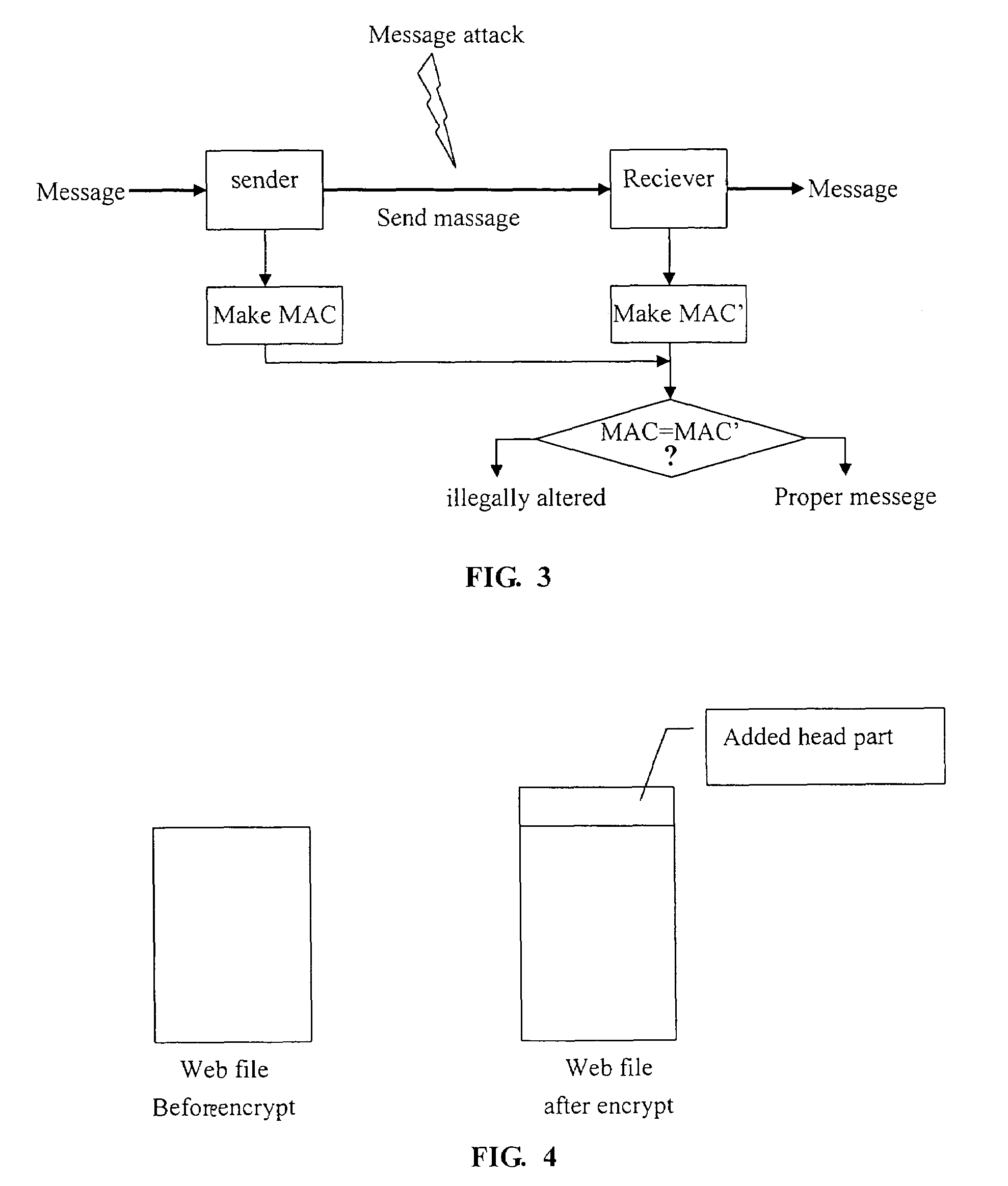Anti-alternation system for web-content
a technology of anti-alternation and web content, applied in the field of internet web server computer systems, can solve the problems of corresponding security disadvantage, growth rate of web-attack technology, and inability of current security products to defend against all cyberattacks
- Summary
- Abstract
- Description
- Claims
- Application Information
AI Technical Summary
Benefits of technology
Problems solved by technology
Method used
Image
Examples
Embodiment Construction
[0040]FIG. 2 illustrates an overall concept of the system of the web protection system. The system performs an authentication check for all Web content on the Web site. If the authentication check detects an alteration, it stops sending the illegally changed Web content. It enables system administrators to deal with the alteration immediately as the system is equipped with instructions to inform administrators of the alteration.
[0041]In this embodiment, the encrypting Web server would not distribute any illegally altered data to Internet users (or browsers in software terms). In this embodiment, the Web contents are encrypted and joined with anti-alteration header information while being sent to users. The contents are decrypted upon receiving a page access request. Using this method, even if the system attacker alters the page data, it cannot send the altered contents to users directly. This is because the content became meaningless upon being decrypted, as the page data sent to us...
PUM
 Login to View More
Login to View More Abstract
Description
Claims
Application Information
 Login to View More
Login to View More - R&D
- Intellectual Property
- Life Sciences
- Materials
- Tech Scout
- Unparalleled Data Quality
- Higher Quality Content
- 60% Fewer Hallucinations
Browse by: Latest US Patents, China's latest patents, Technical Efficacy Thesaurus, Application Domain, Technology Topic, Popular Technical Reports.
© 2025 PatSnap. All rights reserved.Legal|Privacy policy|Modern Slavery Act Transparency Statement|Sitemap|About US| Contact US: help@patsnap.com



